If you’re going to put yourself through hell, you might as well do it in heaven, eh? When I took part in my first race back in 2010, at the age of 40, I thought running might become a nice hobby to keep me fit. But if completing the Transvulcania Ultra has proved one thing, it’s that running is no longer a hobby. It’s not even a habit or even a fixation. It’s a full blown obsession. An addiction so thoroughly embedded in my soul that I am willing to risk my life to get a fix. I suspect it’s the same for my running wife, Richard.
Convincing Our Wives
A few months ago we watched a TV documentary on the Transvulcania Ultra in La Palma. A race that is beginning to attract a lot of attention in the ultra running community. Seasoned runners like Kilan Journet, Emily Forsberg, Anna Frost, Blake Hose, Sage Canaday and Luis Alberto Hernando had all come to race 74km and nearly 4500 metres of elevation over and around the forests and volcanic mountains of this tiny Canary Island. It really caught our imagination and before we had time to question the wisdom of our actions, we had signed up for the 2016 instalment of the Transvulcania Ultra.
Our wives are growing accustomed to our constant need for running adventure and the promise of a week in the sun at a nice hotel was easily enough to see them both flicking through holiday brochures and messaging each other about whether to hire a car or how to get the children out of school without being fined. We settled on the La Palma and Teneguia Hotel and Spa with 11 pools on the west coast of the island and only 10 minutes drive from the Transvulcania start line.
Hill Training
Richard and I duly began our regimented training program of simply running lots of marathons and ultras prior to the race. In all seriousness, we were well aware that the Transvulcania Ultra involved some serious elevation and that we really might need to do some hill work in preparation. We had planned to find a big hill and do a regular, once a week, hard session of climbing. As it was, from the turn of the year we were running so many races that we couldn’t fit any other training in. Almost every Saturday or Sunday from January to May, Richard and I raced an event. Thankfully, many of these were hilly trail races, including the South Downs Way 50 and the CTS Endurance Life Ultra in Sussex.
Come the start of May 2016 we both felt pretty fit and ready to tackle the biggest physical and mental challenge of our running careers. We’ve had tough races before. Busting a gut to try and break your parkrun or your 10k PB can feel pretty darn tough. The World Half Marathon Championships and the London Marathon were huge personal challenges for me this year. But we run these kind of events all the time. We are experienced and the challenge is not completion, but by how much can we improve. For us, the Transvulcania Ultra was a step into the unknown. A challenge we were not sure we fully understood. A challenge we had no idea we COULD complete.
Early Start
Richard and I collected our race bibs from the expo in Los Llanos the day before the race. The expo was situated right next to the finish line so we were able to have a look at what would await us the next evening. In the afternoon our children took part in the Transvulcania Kids Race, held up in the forest at the finish line of the half marathon, at El Pilar. It is beautiful spot but the start of the kids races gave us a tiny glimpse of what the morning might bring. It was so tightly packed that when the gun went off there were children falling over here, there and everywhere. There were cracked heads, bloodied noses and tears a plenty! Luckily, none of our children were injured and they proudly came away with medals and t-shirts, having run the 500m course.
In stark contrast to my race prep the night before the London Marathon, which was calm, relaxed, quiet, controlled and perfect in every way, getting to sleep the night before the Transvulcania Ultra was a bit of a nightmare. In hindsight, perhaps I should have spent some time during the day preparing my clothing and other gear, rather than trying to do it at 10pm with two ratty children and a stressed wife in tow. But, I did get a little sleep before the alarm went off at 10 to 3 in the morning. Yes, you read that correctly, 2:50am for breakfast at 3am. There were coaches laid on from the hotel to take runners to the start line, leaving at 4am.
Transvulcania Ultra
Transvulcania is an increasingly prestigious race around the world, but it’s absolutely massive on La Palma itself and everyone knows about it. The hotels are therefore well versed in catering for the needs of the runners. Breakfast was no spartan affair. It was fully laid out at 3am as it would be on any other day at 8am. The restaurant was packed with runners and three full coach loads left for the race start at 4am leaving a good number still standing outside the hotel entrance. I’m sure one of the coaches must have gone back for them. Our hotel was literally only 10 minutes drive from the start line at Faro de Fuencaliente.
We arrived well in time for the 6am start so there was rather a lot of standing around in the dark. Faro de Fuencaliente is on the south coast of the island. There is a big, red and white striped lighthouse similar to the one at Beachy Head in Eastbourne and next to it stands the smaller, rather grey looking, old lighthouse. A road leads from the car park down to an open area which could be an overflow car park about the size of a football pitch. On one side is the Atlantic Ocean crashing up against a sea wall of black volcanic rock. On the other, the rock rises from the floor like a huge prison wall. This is where the organisers have chosen to place the start line.
Fantastic Atmosphere
We were all held at the top until an hour before the start when we slowly filtered down the road, past the start, over a chip timing check mat and round in to the start pen. Richard and I had wanted to get near the front to take in the atmosphere as much as possible. However, so had many others, so by the time we got there we were a few metres from the front, but it wasn’t a bad position at all. Powerful lights illuminated the whole scene, music pumped out from huge speakers and the announcer slowly and methodically built the tension. Even at 5am a large crowd had gathered at the lighthouse to see us off. The announcer interviewed race favourites Luis Alberto Hernando and Sage Canaday, TV cameras rolled and the tension built further. There was a huge screen to our left with a digital face clock counting down the time to the race start.
Quite often at races, I’m the only one holding a camera in the air at the start of a race. Even at the London Marathon I don’t recall seeing anyone else with one at the start. However, at the Transvulcania Ultra almost everyone around me was holding up an iPhone or a GoPro or some other sports camera to capture the beginning. This is a serious race for serious runners, but we all love a selfie!! The start itself was nothing short of madness. The hooter went at 6am and all hell let loose. It was like the start of a cross country race with everyone pushing and shoving, barging people out of the way…but in the dark. It was all we could do to stay on our feet in the first mad dash up the road and round the back of the lighthouse.
Following the GR 131
It didn’t settle down either because once you leave the car park you head on to a narrow bottle neck of a path that is the start of the climb up to the Teneguia Volcano. Again lots of shoving and pushing in the dark, but this time on a steep incline with volcanic sand and rock beneath your feet. Richard and I foolishly got caught in the adrenaline rush and tried to clamber round the slower runners to gain a couple of metres. Pointless really this early into such a long race and it only ended up with us getting a ton of sand and small stones in our shoes.
The route of the Transvulcania Ultra follows a path called the GR 131, if you want to look it up on a map. Starting at the southerly tip of La Palma and heading right up the middle on the spine of the island, The first hour of the race was run in near darkness. There was no need to worry about going wrong because you simply followed the line of lights in front of you. Every runner had a white head torch at the front and a red tail light on their back. It really does look impressive to see the long line of lights snaking up the hills as you look ahead and more so as you turn around occasionally to look back on where you’ve come.
Above the Clouds
The first of the aid stations is at Los Canarios at just over 7km in. I was feeling ok but I knew we had gone off too fast. I had tried to stay with Richard running up to Teneguia Volcano but by the first aid station I had let him go. I turned my head torch off and took a quick drink. It was 7am and there were lots of people lining the streets to cheers us through the village. Out of the village and up in to the forest we ran with the sun dancing through the trees. We had to climb for another 9.5kms before the next aid station at 10 miles. By now we were just under 2 kilometres into the sky and above the clouds. Looking back I can remember it feeling like such hard work to climb and there certainly wasn’t an awful lot of running done during that first 10 miles, but it felt great to reach that aid station because in my head, that was the toughest part of the race over……little did I know.
The scenery from here is stunning. Panoramic views of the island, mountainous landscape all around, forest stretching out below and clouds below that, with the sea in the distance. Now came the most enjoyable running section of the race. Down through the forest towards the half marathon finish line at El Pilar. It was generally comfortable, fast-paced, easy running and we steamed in to El Pilar at 24km to rapturous cheers from the huge crowds gathered there. The aid station here was huge. All manner of fruits, sandwiches, cakes and biscuits. There were generally three drinks on offer. You could have water, Powerade or Coke. It’s Coke for me every time. I had Tailwind in my backpack but I get bored of its taste after a while. I ate a ham and cheese sandwich and some melon and took a chocolate biscuit to eat later. Then I decided to take my shoes off and empty the stones out. In the end I stayed about 10-15 minutes at El Pilar. Far too long really. When will I learn?!!
Roque De Los Muchachos
The next 25 kilometres takes in four more aid stations and, after a few miles of average scenery, becomes utterly stunning again as you climb up to the highest point in the race and the highest point on the island at Roque De Los Muchachos. There are some scary ledges with only a few feet between you and a drop of hundreds of feet. During this section again there’s not a lot of actual running. Some of the inclines are brutal and some more gentle, but it’s the views that get you through. When you’re up there it’s hard to imagine that you’ve climbed it. Only a few hours ago you were next to the ocean some 2400m below and now you’re up here looking down on the clouds. Incredible. The sky is so clear here that there are a number of big white-domed observatories dotted around, telescopes trained on the heavens.
I reached the ‘aid station at the top of the world’ as I’m calling it, feeling very pleased with myself and pretty good all told. Yes the climbs had been punishing, yes I was tired, but not shattered. I tried not to stay too long at this aid station as I had heard that Richard was actually not too far ahead of me. I also know he’s not a massive fan of downhill running and I am. With 24km to go I wondered if I might make up some ground, pass a few people and even catch Richard. My watch told me I had an estimated finish time of 11 hours 28 minutes and I was well happy with that. So on I went.
20km Descent
There’s a short section of flat running before the real descent begins. It is essentially a drop of nearly 2500m, that’s the entire vertical elevation we’d just spent 50 kilometres climbing, in just 20km. If you can’t picture that in your head, well, it’s really steep. Just imagine running down a steep hill. Now make it slightly steeper. Now make that steep hill 20km long. Now instead of the lush green grass you’re imagining, put loose, sharp, volcanic rock under your feet. Now you’re getting the idea. To be fair it wasn’t all like that. There was the forest section with slippy mud, grass and tree roots and the road bits towards the end. But they were too little too late.
Quads and Toes
I began to get very frustrated. Occasionally I would make the decision that pain is temporary and that I would try to start running, but then I would almost immediately slip and kick myself on the ankle…I seemed to do it in the same spot every time…and I would slow back to a pathetic walk. I was so annoyed with my inability to run it began to get depressing. But there was nothing I could do. I effectively walked almost the entire 20km descent. As we approached Mirador del Time nearer the foot of the descent, there were a few sections of road. But by now my legs were so destroyed I couldn’t even run down smooth tarmac. At one point I took to walking backwards! The final few hundred metres of decline (and I say that referring to the geography as well as to my own physical and mental state) is down to the beach at Puerto Tazacorte on a very windy (switchbacks, not weather) path. From the top of this path, and before, I could hear the noise of the crowds, the music playing and the announcer welcoming runners to the finish line of the Transvulcania Marathon. I could see the beach and the inflatable finishing arches from way up.
After what seemed like an eternity, I finally made it to the base of the climb and managed to break in to a trot along the promenade to the marathon finish line. I must have looked wrecked because I was being given supportive slaps on the back and high fives by the crowd as I ran. I was wearing an orange bib, number 422, with the word Ultramarathon written on it. Marathon runners had a green bib with Marathon on. So I was filtered, not through to the finish, but to the final aid station where a volunteer poured cold water over my legs. I grabbed a slice of water melon and went on my way. There was a short section of promenade to run on before we were directed off on to the beach!
Tears at the End
I had 5km to go. Richard had finished in 12 hours 23 minutes and everyone was waiting for me at the finish line. I kept texting Victoria to tell her how far I had to go and how long I thought I would be. I thought I might be able to run for a bit, but once we were directed on to the beach that became impossible again. The next 2km were over the rocks and stones of a dry river bed heading inland from Puerto Tazacorte. It’s a wonderful thing to learn that this gully is called, Barranco de las Angustias, which translates as Ravine of Sorrows! Awesome. I was thankful that by now I was no longer being passed by multitude runners, but I was walking alongside equally destroyed individuals. The final sting in the tail of the Transvulcania Ultra is another climb of over 300m in elevation, up to the town of Los Llanos. From there it’s a straight run of about a kilometre on the road to the finish line.
It was about now I could really feel the emotion starting to well up. After all this time there were still crowds on the streets cheering runners home. They could see the anguish in my face. They saw the desire in my eyes for the end and they roared me home. I passed Richard, Tanya and Leia cheering me on with 300 metres to go and as I rounded the corner on the run-in my wife shouted that Ellis, my youngest son, wanted to run the final 100 metres with me. I took his hand and ran, literally, along a red (well orange) carpet, with music pumping and an announcer calling me in. I had managed to run the final road section all the way and crossed the finish line in 13 hours and 40 minutes, some 2 hours slower than planned and an hour and 20 minutes behind Richard. The announcer slapped me on the back as I finished and I wiped away a few tears when my son was handed the finishers medal to place over my head.
Hasta Luego La Palma
Transvulcania Ultra is THE most brutal race I have experienced to date and Richard feels the same. He was heard to say that if you gave him £10000 he wouldn’t do it again. He messaged me soon after with the words “What the fuck was that, what just happened to us?!!”. He too had found it difficult on the downhill section, just not quite as difficult as I had. Luis Alberto Hernando had won the race in just over 7 hours, almost twice as fast as me! There and then Transvulcania had beaten us, taken us by the feet and chucked us unceremoniously to the ground in disgust. It had beaten us because, as in so many things in life, we were unprepared. Yes, we had trained on hills. We had done lots of miles and plenty of elevation. But our training had focussed on going up. In our minds the greatest challenge of Transvulcania was the climbing. The 10 miles of up at the beginning, and then the next 20 miles of up after that! We had not even considered the 20km of downhill at the end. We had not trained on the right type of terrain and we had certainly never run such a steep descent over such a long distance.
If you were to ask me now, what is the most difficult part of the route, I would say it entirely depends on how fit you are, what type of training you have done and of course what happens on the day in terms of the weather and your nutritional balance. If you haven’t trained on technical downhills, you will suffer at the end. If you haven’t done enough climbing you will suffer at the start and at the very end with that ‘sting in the tail’ climb to Los Llanos. You might also suffer with the altitude, getting enough oxygen or with the volcanic dust clogging up your lungs. I’ve watched interviews with the elite runners who say that just finishing that race in whatever time, is monumental.
24 hours later, Richard and I were plotting our return. How dare that descent get the better of us? We can run it faster than that. Next time we’ll be ready. It took a good three days for us to be able to walk again and that has never happened before. So we are decided. We are going back to do the Transvulcania Ultra, maybe even next year, and we will get down that final descent with our legs still operational and our pride intact. And look….ok….we may even purchase some poles.
The British Ginger Runner
Having made the film, which I hope you enjoyed, I duly uploaded it to Facebook and YouTube and have been blown away by the response it’s received. The thing is I feel a bit of a fraud because you can’t fail to get stunning footage from the course. Just point the camera and everything looks awesome! A lot of people have said it’s a very emotional film and again, it is, but only by accident! I didn’t plan to cry at the end and I didn’t plan for my son to run with me. I did, however, ask him to put the medal over my head as I thought that would be nice. Even in the depths of physical and mental agony, I was still thinking about the footage!!
The other night I settled down to watch Ginger Runner Live, because he was going to interview Alicia Shay and Chris Vargo about Transvulcania. It’s definitely worth a look if you’re interested. Alicia finished 4th female and Chris was 5th overall. Amazing performances. After the show I sent the link to my film to both Alicia and to Ethan Newberry (Ginger Runner) and they were both kind enough to watch it and respond on Twitter. Alicia has now officially given me the moniker ‘The British Ginger Runner’, which I am happy to accept!
Song Time
I have written a short song about running long distances, to be sung to the tune of Head, Shoulders Knees and Toes. Please enjoy.
Neck, nipples, quads and toes, quads and toes
Neck, nipples, quads and toes, quads and toes
Dicky tummy, shits and sweaty clothes
Neck, nipples, quads and toes, quads and toes
I thank you.
If you have enjoyed reading this Transvulcania Ultra race report please share it with anyone you know who might be interested, particularly those planning to run next year! Give it a ‘like’ or a tweet. If you want to see more race videos do please subscribe to the Film My Run YouTube channel and you’ll be updated every time a new video is posted. Finally, I make absolutely no apology for the use of the Oxford comma. I like it and as far as I’m concerned, it stays. That said, thanks for reading! Comment below if you have something to say.


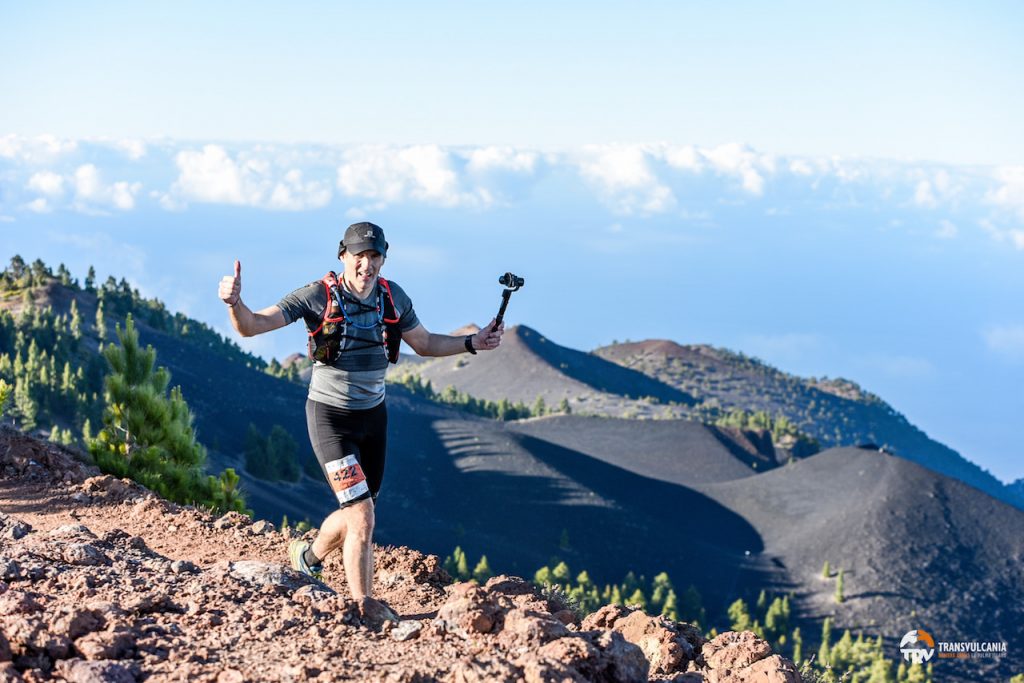
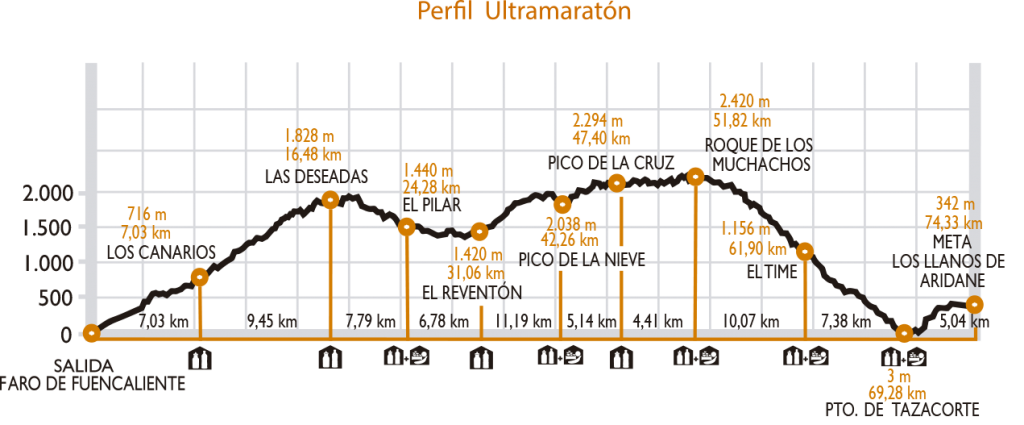
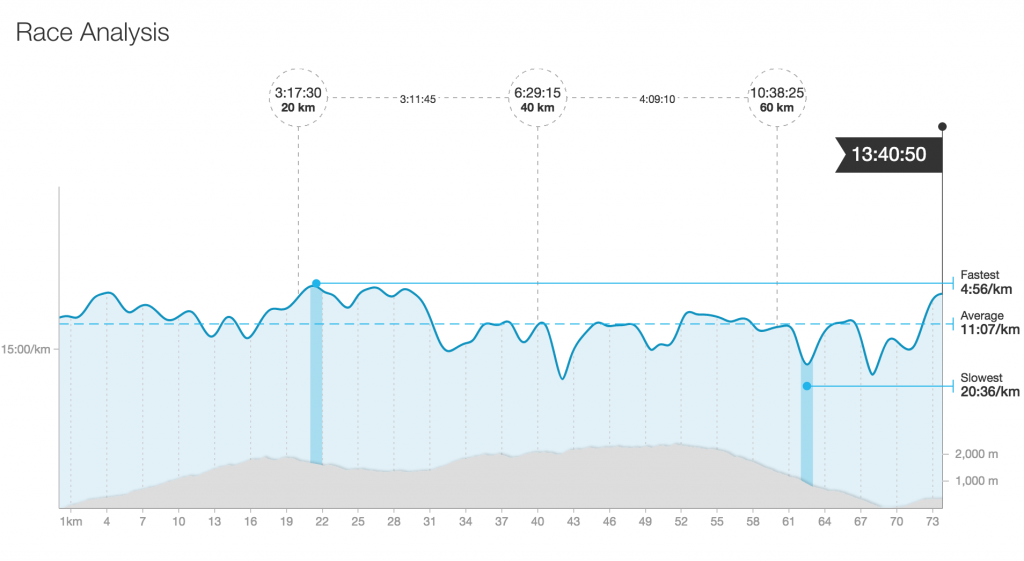


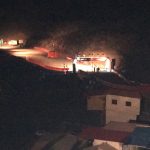
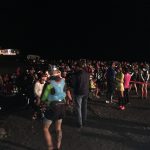

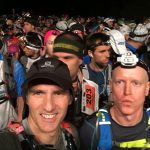
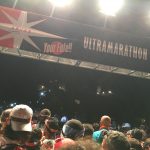
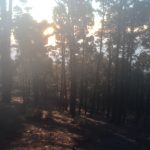
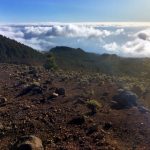
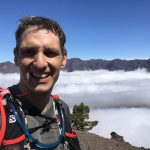
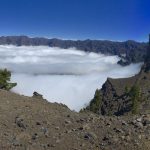


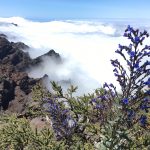

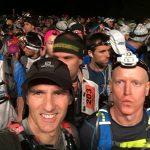
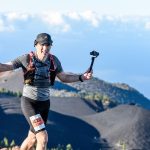

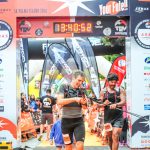

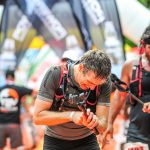
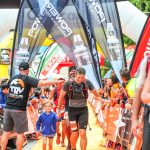
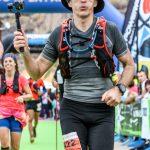
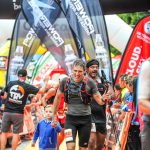
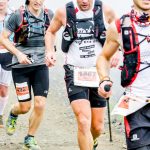
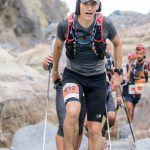
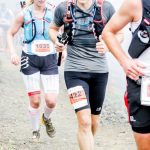
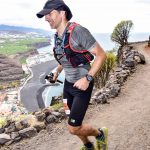
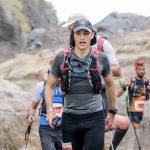


Pingback: South Downs Way 100 - Centurion Running - Film My Run
Pingback: Arundel Castle Triathlon 2016 - Film My Run
Pingback: Bewl 15 or Is this a mid-life crisis? - Film My Run
Pingback: The Gauntlet Half Iron Distance Triathlon - Castle Triathlon Series
Pingback: The Gauntlet Half Iron Distance | Castle Triathlon Series